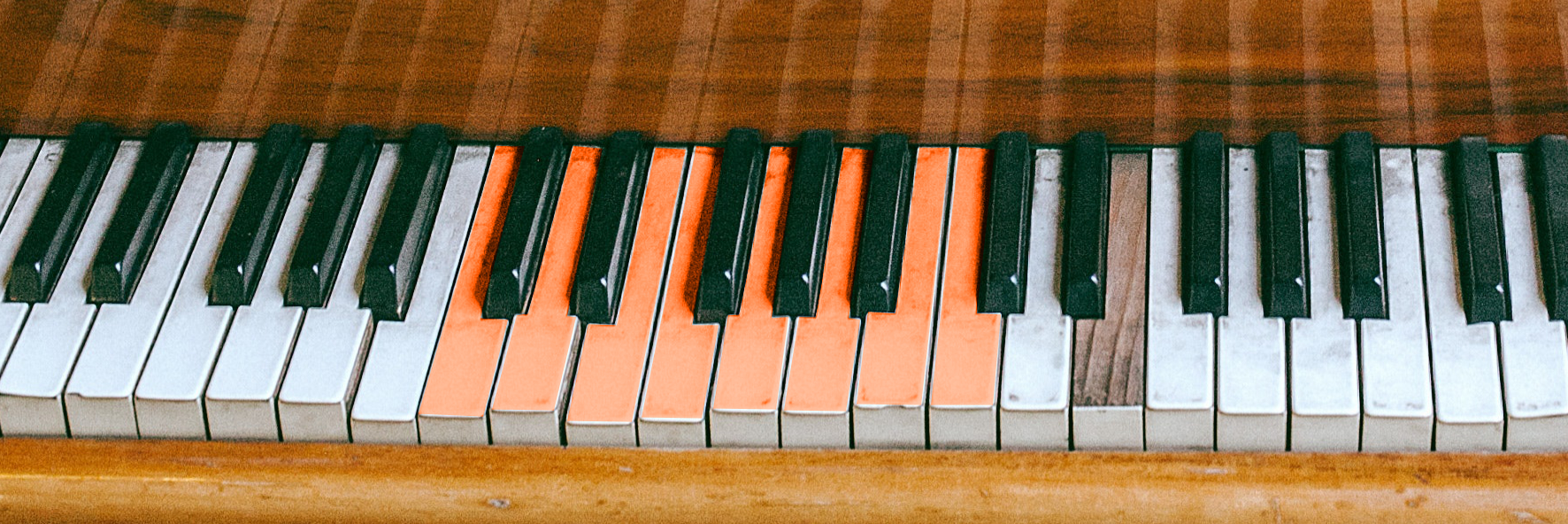At the end of this section, you’ll find a list of posts discussing music theory with the practicing songwriter in mind. None of them assume that you can read music.
For example, we discuss
There are plenty of great songwriters who never studied music theory. Intuition, practice, and learning as many songs as you can: together these can teach you most of what you need to know.
But music theory can open your eyes to new possibilities, provide practical shortcuts, and give you more direct control over your songs.
As a simple example, if you know that major key songs in popular music are often limited to six common chords, then you can quickly find chord progressions that work in any major key.
And you can also intentionally break that pattern.
There’s a lot of power in understanding your options and having a sense of why songs work the way they do. And if you’re not that interested in music theory, the good news is that you don’t need a deep technical knowledge to use it in your writing.
On this site, you’ll find resources ranging from deep dives into music theory for songwriters to practical exercises that gradually introduce theory concepts by showing you how to use them right away.
Intervals can be grouped into a few categories called steps, skips, and leaps. These categories can help you control how your melody develops within and between sections in a song.
We've looked at tone tendencies in major keys. Now let's see how different tones create tension and expressive effects in minor keys.
Tense and unstable tones in a scale can evoke powerful emotions in our listeners. Let's look at how unstable tones in the major scale create tension and how they can be used for expressive effects.
Every strong and independent melody has another, simpler melody hiding behind it. The ability to identify and play with this skeleton can help you control the way your melodies move over time.
Just as words can be emphasized when speaking, notes can be musically emphasized in a song. Since emphasized notes have greater impact, they shouldn't be wasted.
'Tension and release' is one of the most powerful tools available to a songwriter. Thinking in terms of a home chord can help you play with tension and release with greater control and purpose.
Understanding chord relationships can help you quickly write songs in any key. Let's take a visual approach to describing the relationships between the chords in a minor key.
Understanding the relationships between chords can pay off many times over for a songwriter. Here's a quick guide to the common chords in a major key.
Which guitar chords should you learn if you want to write songs? A handful of basic chords and a capo open up endless possibilities.
Let's look at some practical techniques you can use to find chords that fit your major key melody. No knowledge of reading music is required.
Once you know the key of your song, you'll be able to narrow down your choices of chords (and notes) that will probably sound 'right'. Let's look at two ways to find the key for a melody.
Are your chord progressions sounding stale or repetitive? Are you looking for new sounds? Borrowing chords is a great way to expand your options.
There's a world beyond major and minor keys, and it can really open up possibilities for your songwriting. Let's explore how to combine them together into a super key!
Harmonic functions provide one framework for understanding why some chord progressions work and others don't. Let's take a closer look at harmonic functions in major keys.
There are two methods to find (and understand) the modes. Let's explore these, and then order the modes from 'most major' to 'most minor' to better understand their distinctive sounds.
Minor key progressions can be trickier to write than with major. Let's look at some practical frameworks you can use for writing your own minor key songs.
Understanding how to write major key chord progressions provides a foundation for your songwriting, no matter where you want to go with it. And you only need to familiarize yourself with six chords.
Music theory isn't necessary for writing songs, but it can help broaden your options. Let's look at the parts of music theory that are particularly helpful for songwriters.
Some think that to be a great songwriter, you have to understand music theory. But used badly, theory can cause you to write boring music!
Whether it's this site or any other, people are always talking about the key of C major. What is it and why is it treated as the standard key?
A common system for representing chords uses Roman numerals. We'll look at how this notation works and how it can be useful for a songwriter.
Just as the V pulls toward the I, and the ii pulls toward the V, so does the VI7 pull toward the ii. Let's look at how to created an extended tunnel from these chords.
We've seen how to establish a sense of home. Today we’re going to enter a portal to another world: the world of chords outside the home key.
In this series, we'll look at a variety of secondary dominants and provide exercises you can use to integrate them into your songs. Let's start by considering the magnetic power of seventh chords.
In the third installment of the Light and Shadow mini-series, we look at a strange technique that is sure to bring about surprising results.
In the second installment of the Light and Shadow mini-series, we’re going to go deeper into the idea of writing separate light and shadow parts.
The interplay of light and shadow will help us create interest and surprise in our songs. Today we’ll look at one of the simplest ways to create contrast.
Let's explore the power of the iii chord to shift the mood of our song. We’ll use this as an opportunity to explore the idea of musical questions and answers.
We're going to add another to our arsenal of shadow chords, the ii, and look at how it can be used to create a kind of magnetic tunnel back home.
In today’s exercise, we’re going to get courageous and explore a whole new environment: the shadowy, mysterious world of the vi (or relative minor) chord.
We can think of the I, IV, and V together as our immediate neighborhood. But changing to IV can feel like starting out on a longer journey.
The most common way to return home musically is to use chords that pull toward the I. And the chord with the strongest magnetic pull home is the V (or dominant) chord.
We’re going to start with the simplest possible chord progression possible: a single repeating chord. This will clearly establish a harmonic home.











